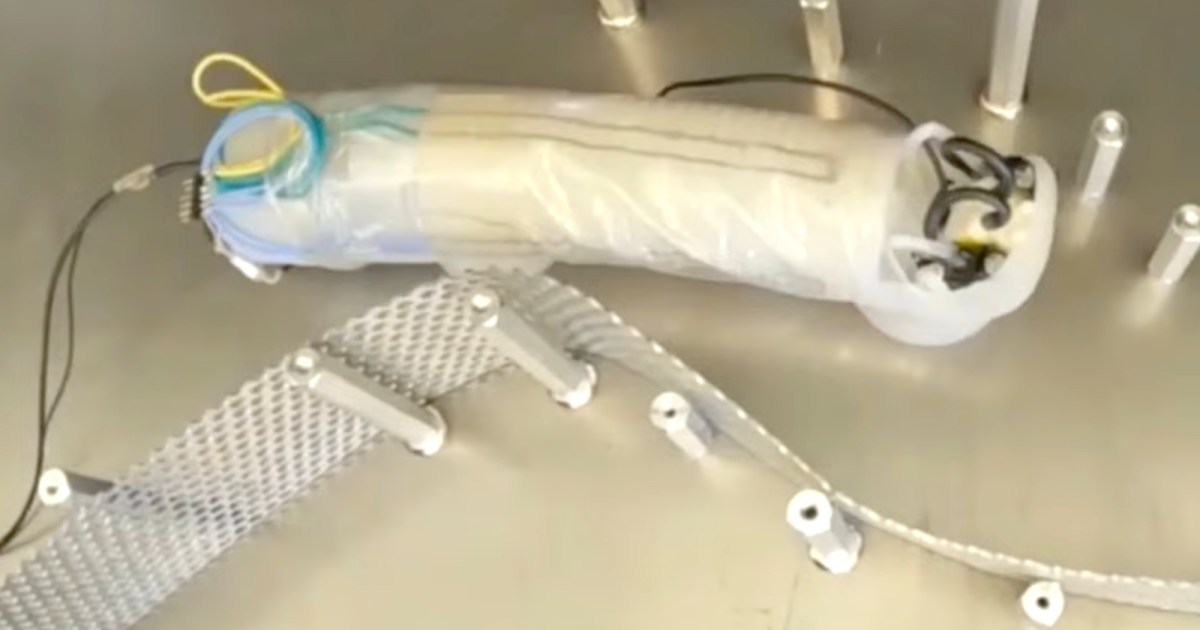
GE Aerospace has unveiled a remarkable — and remarkably squishy — robot called Sensiworm (Soft ElectroNics Skin-Innervated Robotic Worm) that’s set to enhance aircraft safety.
The camera-equipped Sensiworm has been designed for the inspection of airplane parts like engines, with the General Electric subsidiary suggesting that the diminutive device “could serve as extra sets of eyes and ears” for engineers.
A video (top) released by the company on Thursday shows the Sensiworm doing its thing, crawling through an engine’s gaps and curves in search of cracks and corrosion while all the time sending back live video to its human operators.
Today’s aircraft inspections already use highly advanced equipment but face some limitations. A video borescope, for example, cannot inspect an entire engine turbine as gravity causes its tip to naturally settle when it’s not braced against a structure inside the engine. Self-propelling robots like Sensiworm, on the other hand, offer engineers much greater access, avoiding the need to take an engine apart for closer inspection.
“With mini-robot companions like Sensiworm, service operators would have multiple additional sets of eyes and ears to perform on-wing inspections,” said Deepak Trivedi, principal robotics engineer at GE Aerospace Research. “With their soft, compliant design, they could inspect every inch of a jet engine, transmitting live video and real-time data about the condition of parts that operators typically check.”
While the remotely controlled Sensiworm is only capable of carrying out inspections, GE Aerospace suggested that a future version of the robot will be able to carry out repairs, too.
The Sensiworm has been made possible through various funding and development partnerships involving SEMI Flex Tech, the US Army Research Lab, Binghamton University in New York, and UES, Inc., an Ohio-based R&D organization.
It’s not clear when the final version of the robot — which will be untethered — will be ready for deployment, but when that day comes it promises to be an effective safety tool for the aircraft industry.
It’s not the first time that General Electric has worked on robotic worms, with the company also having built one for an activity that’s very familiar to regular worms: digging tunnels.
Editors’ Recommendations
Services Marketplace – Listings, Bookings & Reviews
